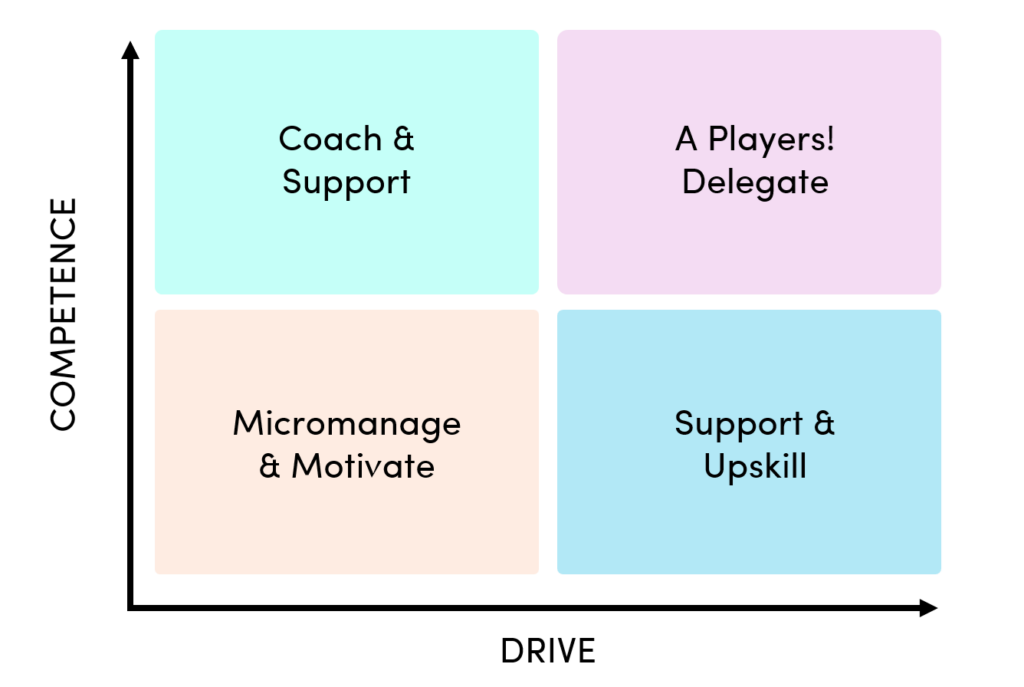
Many great leaders have been trained to avoid being the ‘M’ word: micromanager.
The truth is the best leaders don’t avoid micromanaging at all. This management style can be used to great advantage in the right situations. The key is knowing how and when to apply it, and that’s what we will explore today.
We suggest that instead of choosing one leadership style for all, tailoring your approach at the individual level results in better outcomes for everyone.
Let’s dive in!
Is Micromanagement a Bad Word?
Micromanagement has gained a bad reputation as a management style. And let’s face it; any manager who’s constantly breathing down your neck won’t be the most popular person on the team—but that’s just one aspect of micromanagement, i.e., the one you notice most if it’s not executed correctly. When done this way, it can be smothering, toxic, and may negatively impact employee performance.
It’s precisely the above kind of manager we envision when we hear “micromanagement.” That kind of micromanager is more concerned with poking their nose into anybody’s business but their own and often neglects their own tasks in favor of critiquing someone else’s work.
But micromanagement isn’t always a bad thing. Done right, it can increase performance and support employees in establishing high standards. For example, when new systems or technology are being implemented, micromanagement can be applied to achieve measurable outcomes and ensure compliance with company policy.
Micromanagement can also be used during onboarding to ensure new employees have everything they need to do their job well. After all, high-functioning employees don’t just happen. Even the most talented people need direction, systems, and structure.
The bottom line is that there isn’t just one style of micromanagement, and there are certain situations and team members who may need it, either occasionally or on an ongoing basis. We apply management styles to achieve specific outcomes. Micromanagement is just one tool in the kit.
Helping New or Struggling Team Members Achieve Goals
We have come across the graph below a time or two and have always shared it with our clients as a tool to help them approach team management differently.
You’ll see micromanagement in the bottom left square. The assumption is that as the employee evolves, micromanagement transmutes into another management style.

The orange square could be a new employee, an A-player in a new role, or any team member who requires coaching on new processes. As the individual’s skill sets improve, micromanagement becomes coaching. As their internal drive and understanding of the tasks advance, the management style becomes support, applied when needed.
Once the employee gains a high level of expertise and comfort with the task, they can delegate to others or have management delegate to them.
Identifying skills is more quantifiable. When we talk about internal drive, it’s about motivation. With the right skills and support, it’s assumed that the employee will be motivated to advance.
Should the employee be incapable of moving beyond the red square, it might be necessary to reconsider their position entirely. Micromanagement should not have to be a consistent effort as it serves neither party.
Enabling Your A-Players
Now that we understand how micromanagement can work for new employees, let’s talk about your A-players.
When bosses get involved in the day-to-day work of their top employees, it can be highly motivating. The challenge is knowing when to do it—and when to pull away.
When a manager can bring a unique perspective to a situation or expedite a project or task based on their input, micromanagement can be a positive experience. It can accelerate initiatives, reinforce the importance of organizational priorities, and change the stakes entirely when an important customer is involved. What employee wouldn’t want to move the needle a quantum leap forward if they had the opportunity?
Final Thoughts: Don’t Fear the Micromanager!
If the word “micromanagement” sparks your fight or flight response, we hope we’ve convinced you to give it a second look. Applied judiciously and in the right circumstances, micromanagement is an essential technique that provides employees with the skills, motivation, and confidence to step into their potential.
Equip your leaders with the tools they need to manage, coach and delegate. emPerform offers a complete performance management platform with the flexibility to tailor reviews, check-ins, feedback, and goal setting for different employee needs. Get started today.


